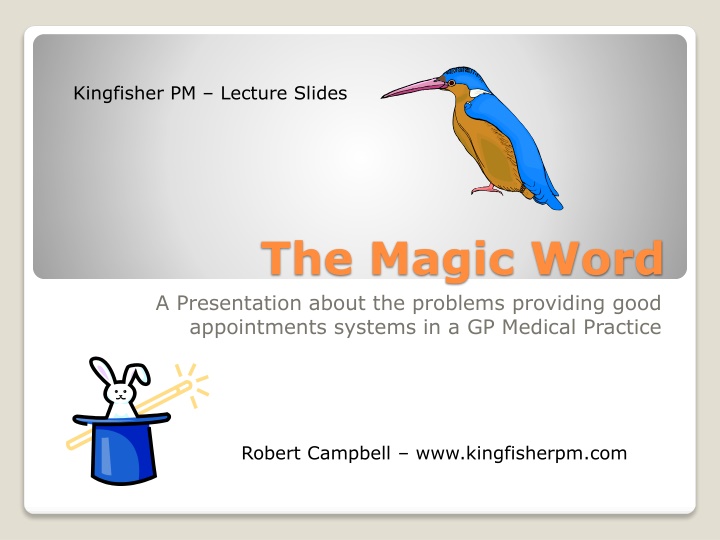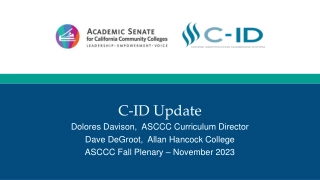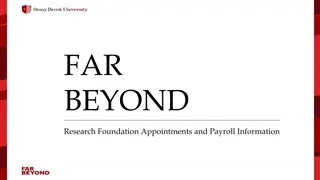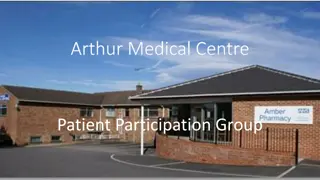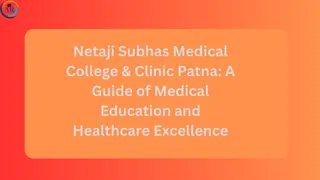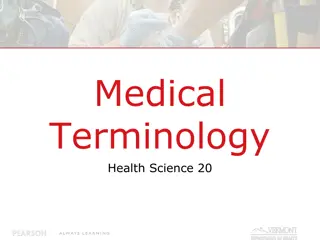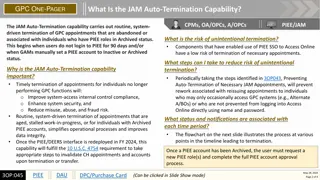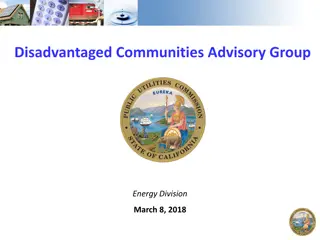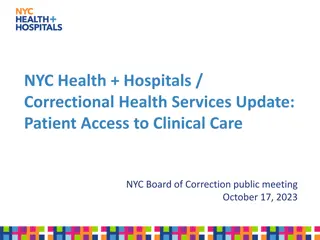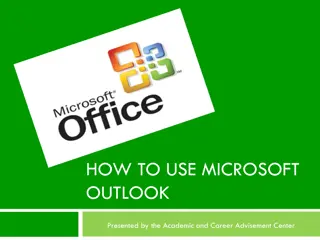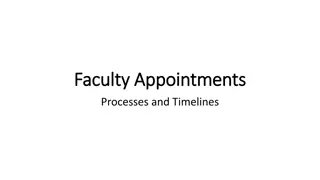Problems Providing Good Appointments Systems in a GP Medical Practice
Walking miles for a GP appointment, changes in GP practices since 1948, patient and GP preferences, appointment scheduling challenges, and the magic word for requesting appointments.
Download Presentation

Please find below an Image/Link to download the presentation.
The content on the website is provided AS IS for your information and personal use only. It may not be sold, licensed, or shared on other websites without obtaining consent from the author.If you encounter any issues during the download, it is possible that the publisher has removed the file from their server.
You are allowed to download the files provided on this website for personal or commercial use, subject to the condition that they are used lawfully. All files are the property of their respective owners.
The content on the website is provided AS IS for your information and personal use only. It may not be sold, licensed, or shared on other websites without obtaining consent from the author.
E N D
Presentation Transcript
Kingfisher PM Lecture Slides The Magic Word A Presentation about the problems providing good appointments systems in a GP Medical Practice Robert Campbell www.kingfisherpm.com
As a child I remember walking over 2 miles riddled with an asthma attack in the early morning to sit and wait for over an hour and a half to see my doctor. This was in the days before appointments systems. But I was seen and I do not remember any arguments about wasting anyone's time, or my attendance not being appropriate. The receptionist simply got my record out of a wooden draw and asked me and my Mum to sit down. There as no barrage of questions such as is it urgent. Sadly, there are few Open Surgerysystems in use today . Robert Campbell June 2011 Open Surgery
Size of Practice Numbers of Patients GP Practices now comprise of almost a 50/50 mixture of partners and salaried doctors with an average 5 doctors per Practice. The average list size for a GP Medical Practice now exceeds 6,800 patients. There are few singlehanded practices. Doctors work from large buildings having either merged with or sharing with other practices. The mix of male and female doctors is around 50%. The vast majority of GPs work a 4 day week or less. The average GP works for 6 sessions over 3 days Practices now employ nurses practitioners, practice nurses and health care assistants. Around 1 in 5 practices now have more than 10,000 patients. What has Changed since 1948?
Patients Want GPs Want To be seen by any doctor today To be seen by their own doctor To be seen within 20 minutes To be able to book an appointment up to 6 weeks in advance Not to have to wait! To work a 4 day week or less Not work at night work after 6pm (not 6.30pm) Have no Saturday mornings or weekend working To have dedicated training time each months and a dedicated Practice meeting time each week. To take a whole day off each week NOT a half day. What do patients / doctors want?
Mornings Afternoons & Evenings Surgeries can open from 8.00am Surgeires can open for extended hours before 8.00am Surgeries normally open on weekdays only, but there is pressure to open on Saturdays and Sundays Surgeries can open until 6.30pm Surgeries can provide extended hours in the early mornings, late evening and weekends When can appointments be made?
What is the Magic Word when patients ask for an appointment? Reception staff are trained to offer appointments if any are available - according to a set of rules laid down by the Practice. Emergency Urgent Minor Illness New illness Existing illness Advanced Access Regular Appointment Routine Appointment Special Clinic They do not manage the appointments system. Added to that, there may be insufficient doctors; some may be ill, on holiday or study leave. Others may be working part- time. Some doctors may have reported absent that day Appointments Terminology
QUALITY OUTCOMES FRAMEWORK The Quality Framework expected GPs to spend at least 10 minutes with each patient. This equates to 6 patients per hour. It would take 2 hours to see 15 patients. Not all consultations take 10 minutes. In a typical week a full time GP would work 9 sessions seeing around 135 patients in total during a routine surgery session. Sessions are expected to be reasonably spread over the working week. With extended hours this now includes early mornings, late evenings and weekends. Seeing How Many Patients?
Practice One Practice Two Routine sessions with urgent s embargoed to be booked on the day Access surgery short appointment for one problem booked today or tomorrow. Early afternoon surgeries offered Extended hours sessions some evenings and early mornings Some appointments on Saturdays Routine sessions throughout the day With urgent extras seen at the end of the session shared between doctors Later morning and early afternoon sessions patients booking today Urgent extras in evening too. Complexities of Appointments
Doctors Choices Patient Choice Patients should be able to choose when to make an appointment to suit their personal circumstances at any time throughout the working day. Practices should have sufficient doctors on duty to deal with the expected demand. The national average list size is about 1838 patients. It is said that patients attend a doctor on average 5 times per annum. Patients should be able to see the doctor of their choice within a reasonable time barring holidays and sickness. That being the case it means that each GP needs to see 195 patients per week. Patients should be able to see a doctor before work or school and after work or school. This is about 21 patients per session a session would take about 3 hours The ten minute appointment system sees 135 patients per week not 195. Patients should be able to see a doctor at the weekends.
It is difficult to see how an easy solution can be found for running the perfect appointments system. Surgeries that are always too busy may need more GPs but there are other options, such as telephone consultations, or a nurse practitioner. Extended hours might also reduce the pressure on appointments at popular times. Patients will always want to be seen now and will not want to wait. Patients will always want to be seen now for trivial complaints that in the view of the doctor could wait. But who is right the patient or the doctor? The customer is ALWAYS right. A difficult balancing act
Doctors Become a training practice Nurses Introduce minor ailments clinic Employ salaried doctors Employ nurse practitioner(s) Introduce a triage system Employ more specialist Practice nurses Introduce telephone consultations Other Solutions Encourage use of routine not urgent appointments Become a minor injury unit Become an out of hours centre Shame broken appointments Refer to a pharmacist for advice Solutions - More Help Needed
Discuss the Solutions Discuss the Problem Decide on the options Outline how your practice manages appointments. Prioritise the options Are there enough sessions and doctors? Draw up a plan Cost the plan Are there enough nurses? Decide when to start Are consultations too long? Implement the plan What can you afford? Solve the Problem by magic ?
